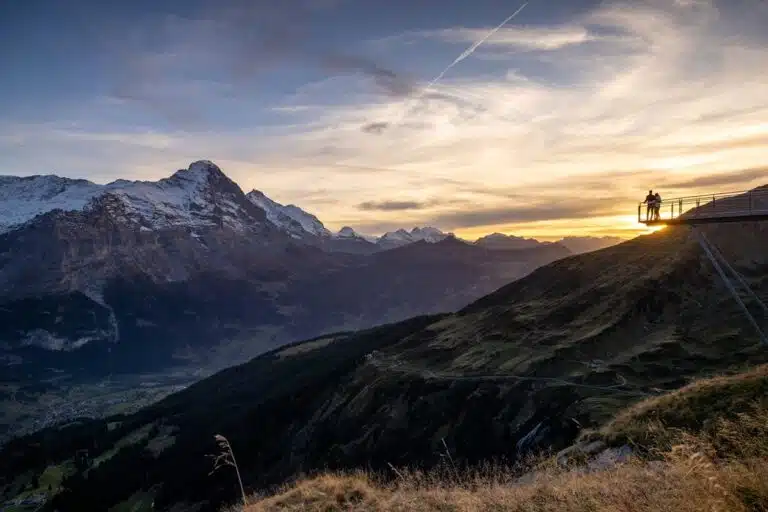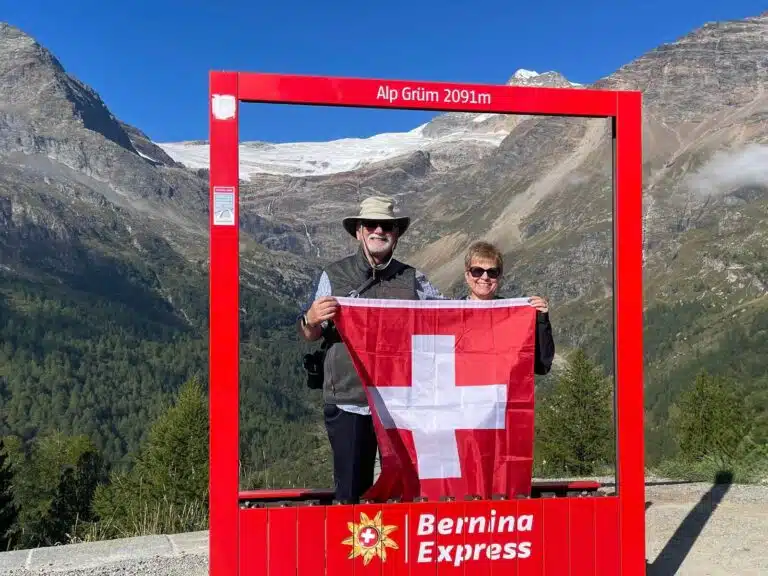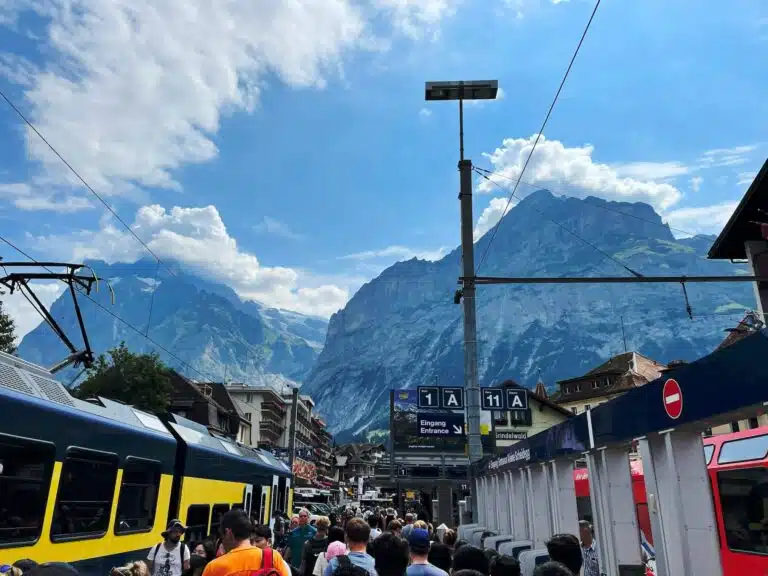Many guests visiting Mount Pilatus with us ask how Pilatus cogwheel train works. We’re not surprised: sitting in the steepest cogwheel train in the world, one must wonder what genius idea brought this machine to life.
If you’d like to know how Pilatus coghwheel train works, then keep reading.
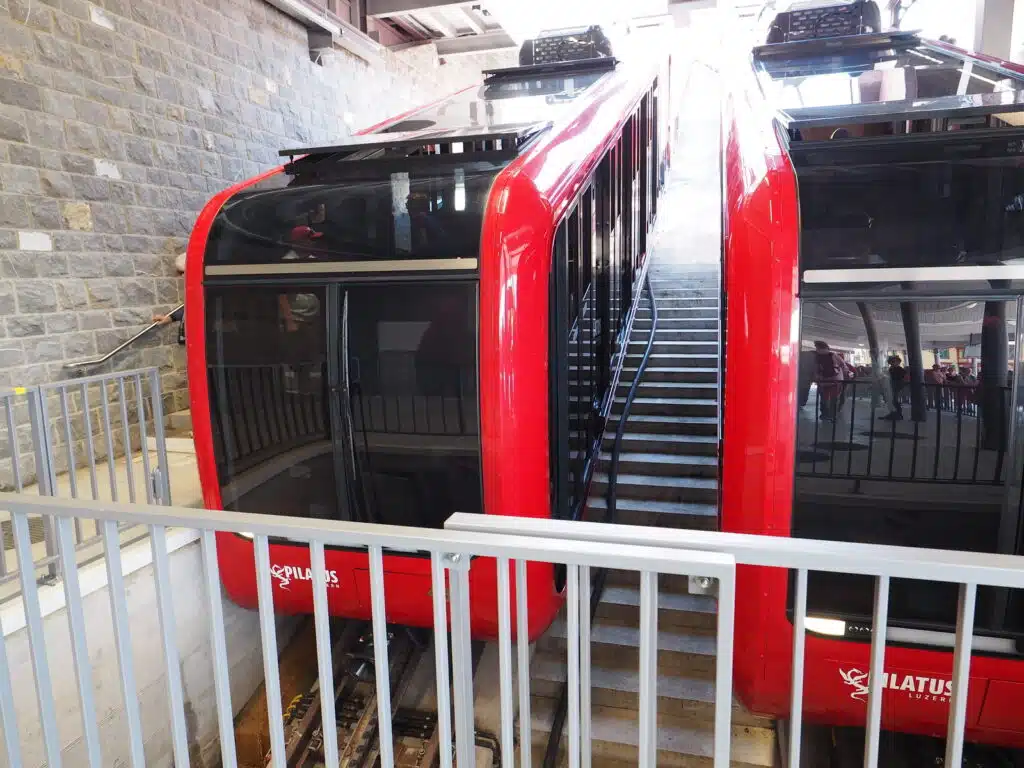
How Did People Hike in 19th Century?
Mount Pilatus cannot be overlooked: its dramatic, beautifully carved silhouette stands proud over the blue waters of Lake Lucerne, dominating the skyline from every corner of Lucerne’s old town. Thanks to its proximity to Lucerne, it became one of the first mountains taken over by mass tourism.
How did hiking look in the middle of the 19th century? To be sure, the British tourists coming here didn’t walk all the way to the top (neither did they carry food and water in their backpacks like we do today).
A sedan-looking carriage was utilized, where tourists sat comfortably while so-called porters pushed and pulled the carriage to the top.
It took the carriers at least 4 hours to climb up and 3 hours to go down Mt. Pilatus. They earned around 2 Swiss Francs per day. Considering that the average daily wage of a Swiss worker at the time was around 1,5 Francs a day, the porters were rather decently paid.
You can see pictures of such carriages with four porters per passenger in the corridors of the Mt. Rigi Kulm Hotel and the Matterhorn Museum in Zermatt. Carriage porters would have to swap out in order to keep the constant pace of getting the passenger to the top.
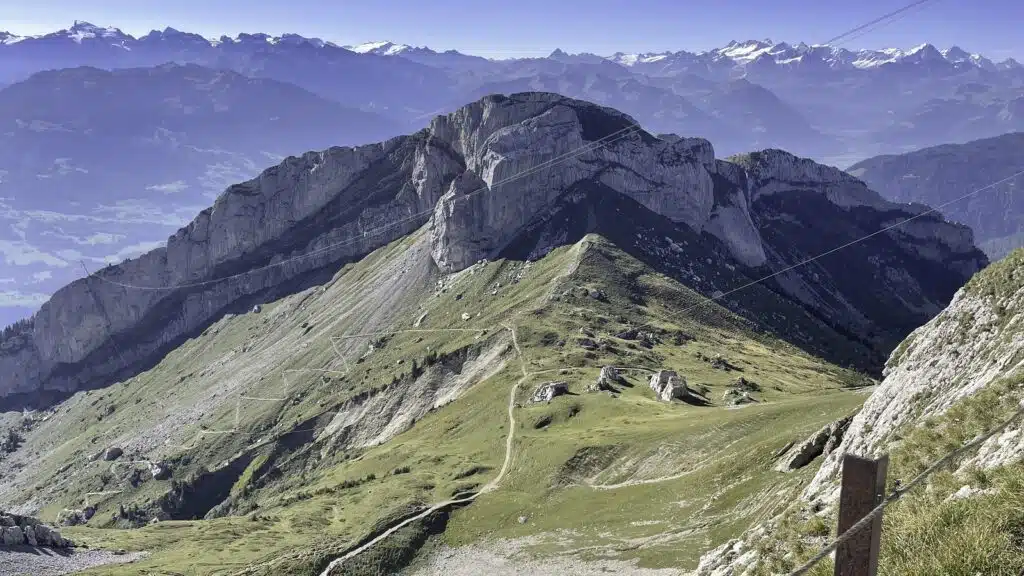
The Dawn Of Mountain Railways
In 1871 the first mountain cogwheel train in Switzerland and in Europe was opened on Mt Rigi. It became a huge success overnight, effectively putting the carriage porters out of business.
Soon, engineers started to look for ways to build railway lines on other mountains. The last two decades of the 19th century saw the railway business boom in Switzerland. The building of the Albula Line, the Visp-Zermatt Line, and the Gotthard Line paved the way for other mountain railways.
There was only one problem that engineers had to solve when building the Pilatus rack railway. Mt Pilatus is extremely steep. The Abt system – the most common rack system in Switzerland at the time – used to pull the train up to Mt. Rigi was limited to a maximum gradient of 1 in 4 (25%). However, to get to the top of the 7000 ft. Mt. Pilatus, the train was required to ascent at a 48% grade.
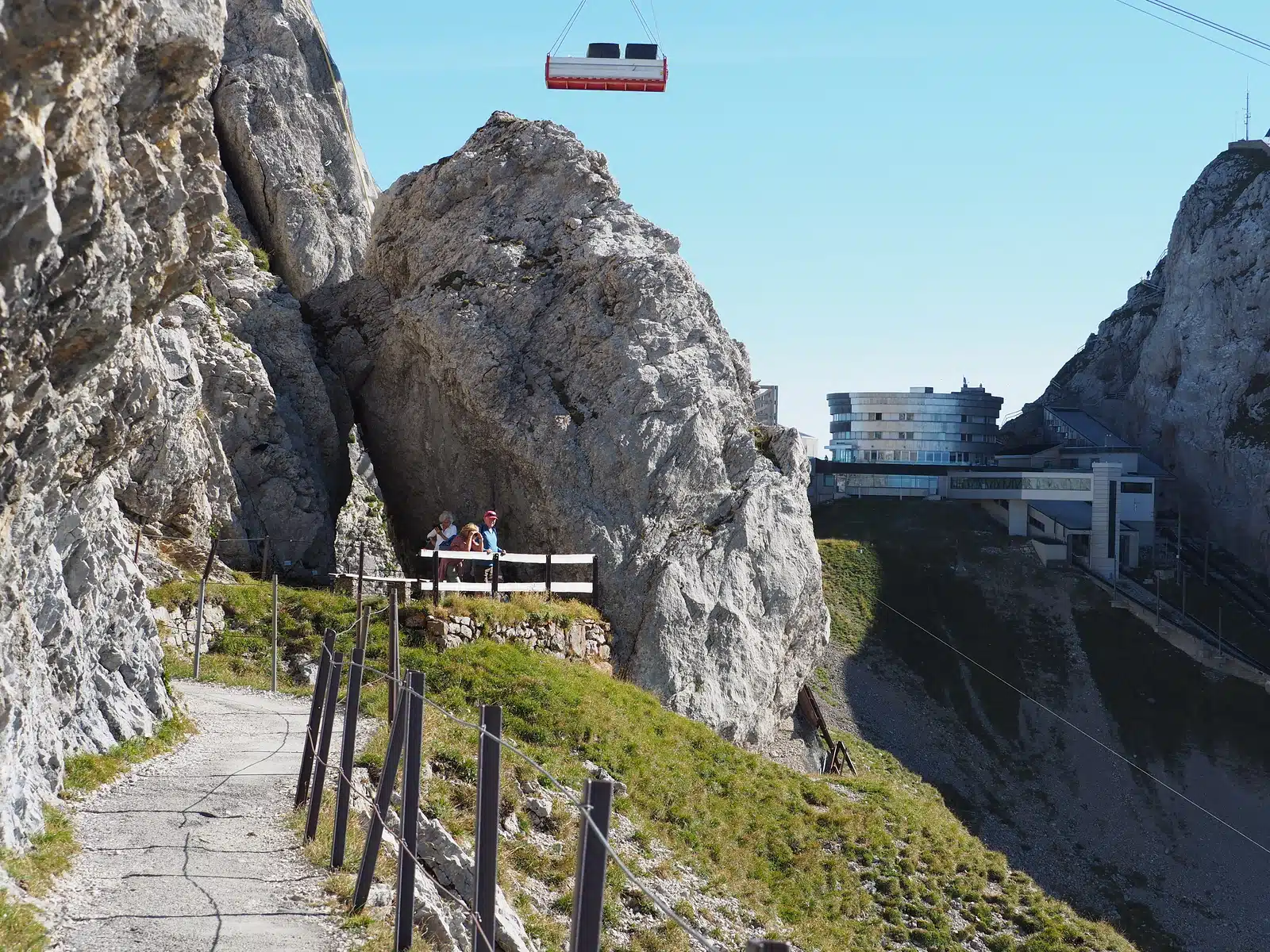
The Locher Rack System: How Pilatus Cogwheel Train Works
The steep grade became a real obstacle in conceiving a safe railway line. After trying out many solutions, a Swiss engineer, Eduard Locher, devised a new cogwheel system wherein cogs were used horizontally, not vertically like in the Rigi cogwheel train.
Locher’s solution was based on a rack system where the rack is a flat bar with symmetrical, horizontal teeth. Horizontal pinions engage the centrally-mounted bar, both driving the locomotive and keeping it centered on the track. That’s how Pilatus cogwheel train works.
This system provides a very stable attachment to the track, protecting the car from toppling even under the most severe crosswinds. Such gears can also lead the car, so even flanges on running wheels are optional.
The biggest shortcoming of the system is that the standard railway switch is not usable, and a transfer table or other complex device must be used where branching off the track is needed.
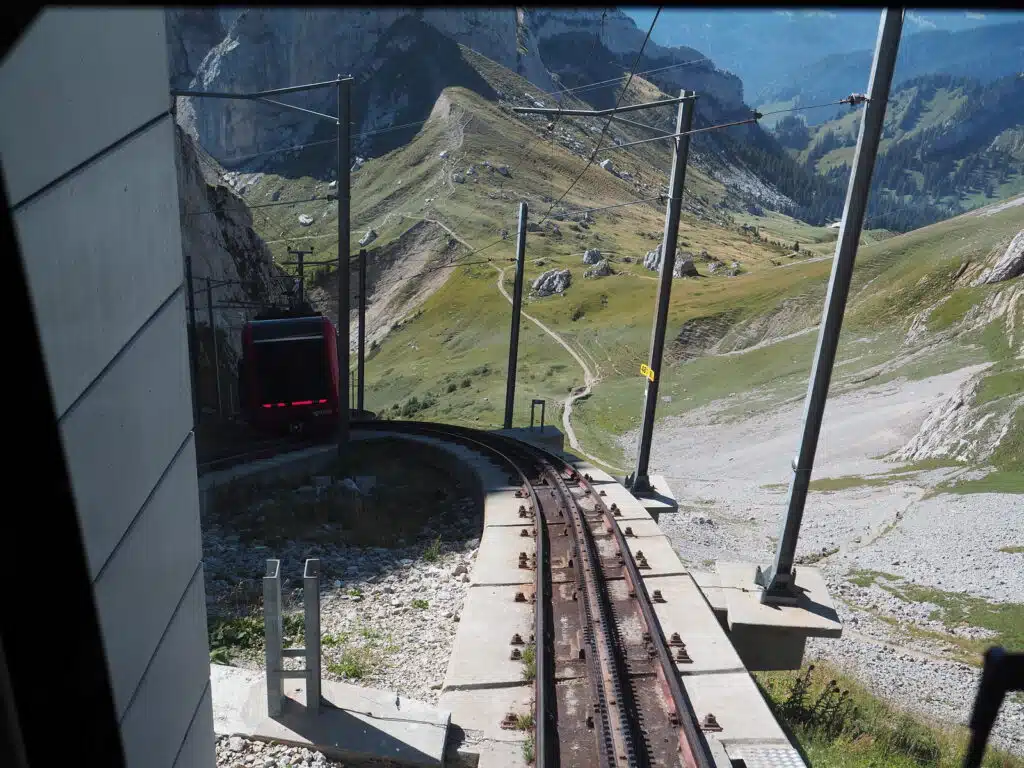
Steepest Coghweel Train in The World
The Locher system provided a much safer and stronger pull that could be used on gradients as steep as 1 in 2 (50%). Even today, this system is still called the Locher Rack System. Following tests, the Locher system was deployed on the Pilatus Railway, which opened in 1898.
No other public railway uses the Locher system, although some European coal mines use a similar system on steeply graded underground lines.
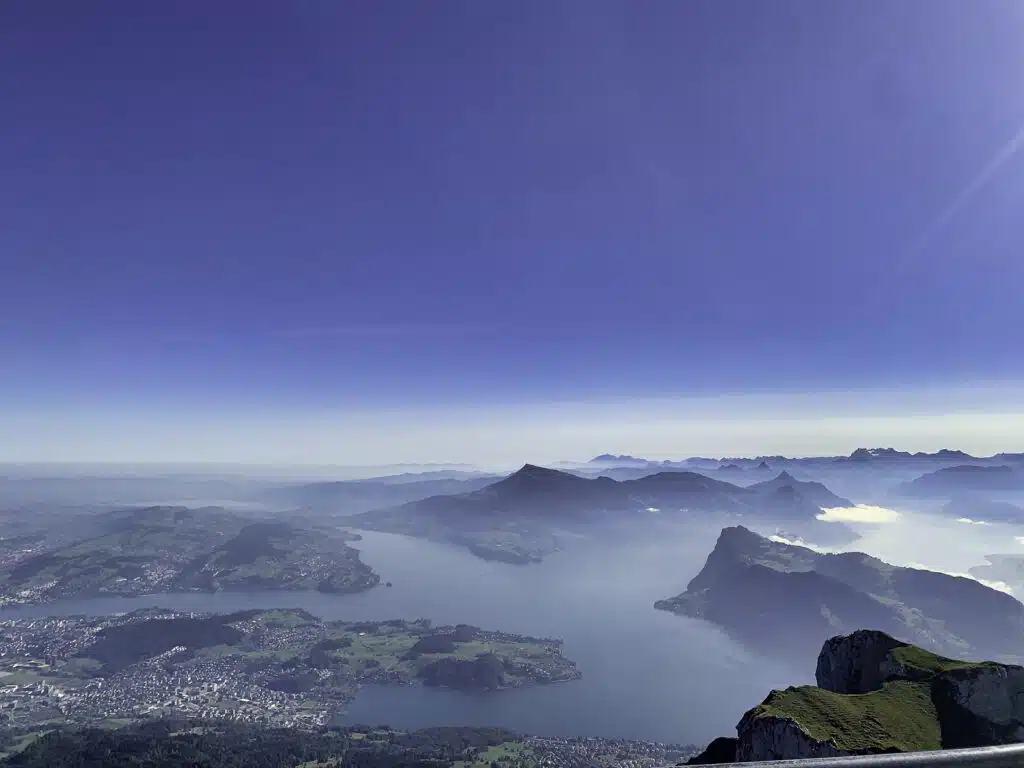
New Cars, Old Solutions
The Pilatus cogwheel train is still the steepest rack railway in the world, with a maximum gradient of 48% and an average gradient of 35%. This makes for a rather spectacular ride, resembling climbing up and down with an escalator, rather than with a cogwheel train.
So how Pilatus cogwheel train works today? The Locher system is still used to get you up and down the 2.86-mile track. Certainly, the railway has undergone its fair share of modernization, but the original system developed by Locher still remain in place, safely taking tens of thousands of tourist a year up to the summit of Mt. Pilatus.
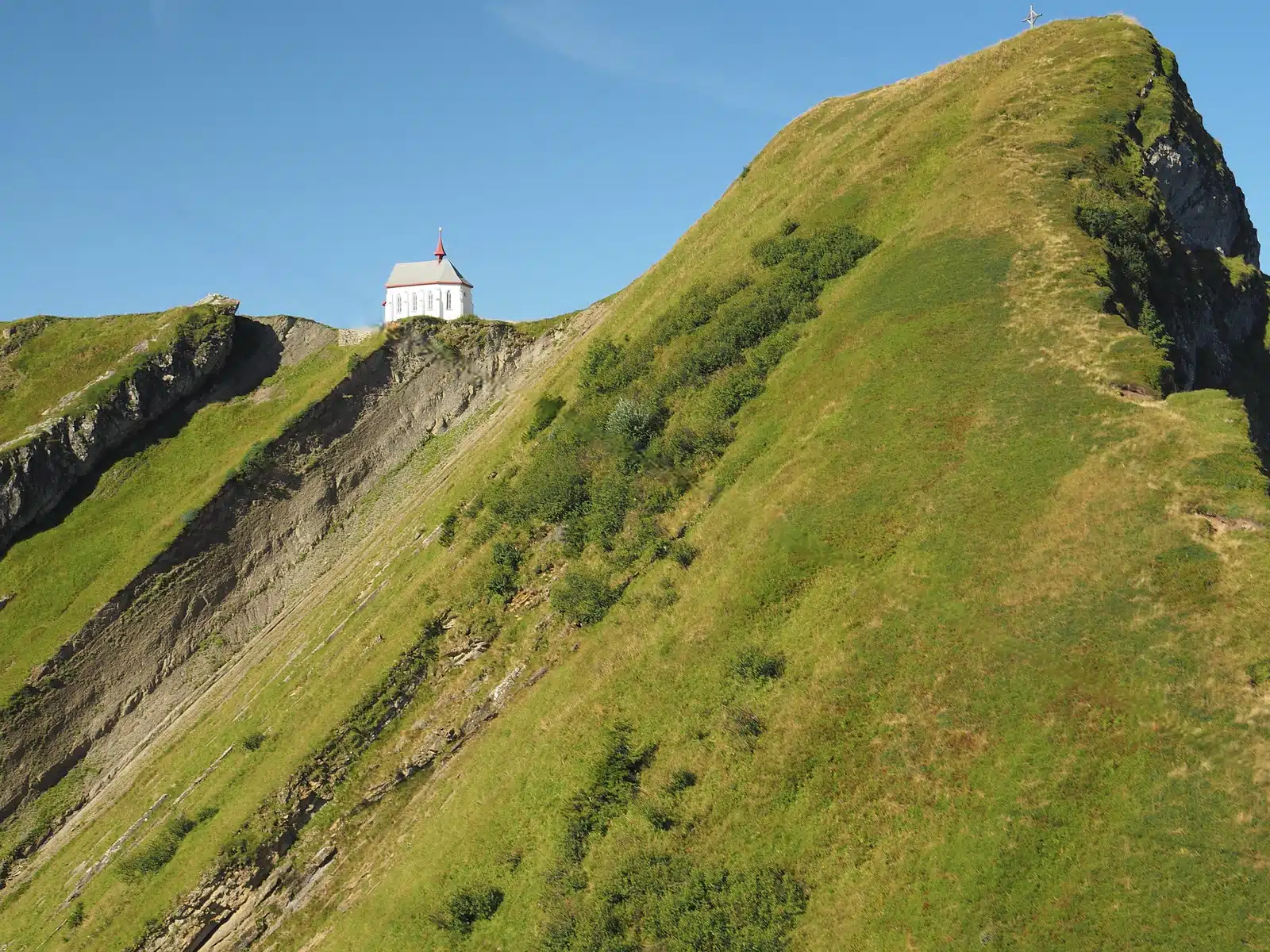
Explore Swiss Railways Jewels
We hope that this blog post explaining how Pilatus cogwheel train works whetted your appetite for a Swiss mountain railway adventure. Switzerland is famous for its fantastically developed and well-preserved railway systems, with many scenic rides providing feast for both eyes and the stomach.
Book your Pilatus Day Trip with us and enjoy a full day of adventure with a ride with the steepest cogwheel train in the world.
If you crave more railway adventures, join our 12-Day Grand Train Tour of Switzerland, where you’ll have a chance to ride 11 of world’s most scenic railways with the comfort of a 1st class seat and dedicated luggage transfer.
Check the tour details below and don’t hesitate to contact us regarding your holiday plans. We will be happy to make your railway dreams come true.

